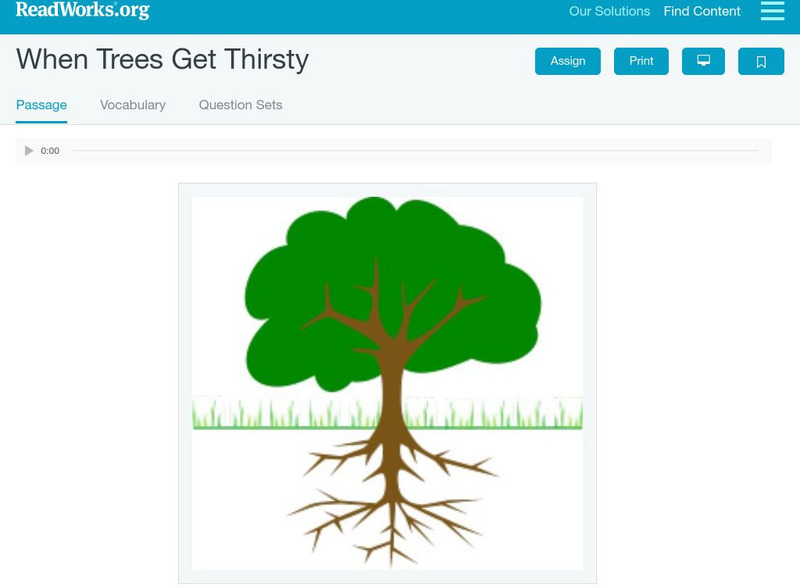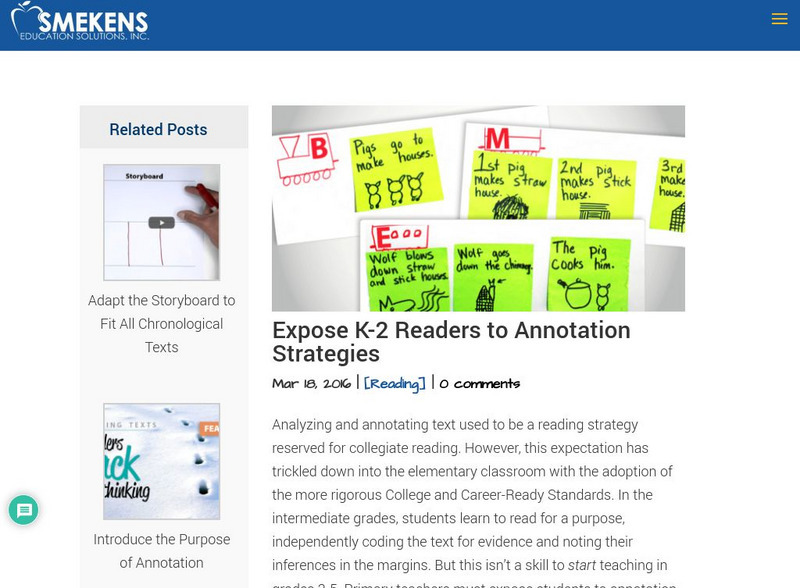CommonLit
Common Lit: Election Choices: 2008
CommonLit.org is a wonderful resource to use in a Language Arts classroom. Each story or article is accompanied by guided reading questions, assessment questions, and discussion questions. In addition, students can click on words to see...
Text Project
Text Project: Fyi for Kids: Vol. 1, Issue 3: Posters Over Time [Pdf]
This magazine article explains how posters were used years ago for news and how they are used today for advertising.
Text Project
Text Project: Fyi for Kids: Vol. 2, Issue 5: Posters That Pop [Pdf]
This magazine article discusses two artists LeRoy Neiman and Peter Max who use bright colors in their work and look as though they are real and capable of movement. Many of these painting have been made into posters and sold.
Text Project
Text Project: Fyi for Kids: Vol. 1, Issue 7: Quilts: Pieces of Art [Pdf]
This magazine article focuses on quilting including the history of quilting, the use of quilting for warmth in harsh weather, and quilting as an art form.
Text Project
Text Project: Fyi for Kids: Vol. 2, Issue 9: Noodles Around the World [Pdf]
Read this magazine article to learn all about noodles or pasta including their history, materials used, names, and how it is eaten.
Text Project
Text Project: Fyi for Kids: Stained Glass: Painting With Sunlight [Pdf]
This magazine article discusses stained glass including its history, how it is made, and materials used to make it.
Reading Rockets
Reading Rockets: 103 Things to Do Before/during/after Reading
The highly-respected Reading Rockets program offers both teachers and students a toolkit of ways to connect more actively with the materials they read. Some of these techniques are specifically for fiction-reading, others are designed...
Read Works
Read Works: Antibiotics: Use Them Wisely
[Free Registration/Login Required] This passage focuses on Antibiotics including who invented them, how they work, how germs can become resistant to them, and how to take them. It is followed by a comprehension question set.
Text Project
Text Project: Fyi for Kids: Drums: Keep the Beat
What are drums made of and how do people use them to make music? Let's find out with FYI for Kids: Drums (volume 1, issue 6). This article discusses the materials, sizes, shapes, and uses for drums. (PDF file download)
Text Project
Text Project: Fyi for Kids: Bison [Pdf]
This FYI for Kids (Volume 4, Issue 1) article focuses on Bison. It explains the difference between bison and buffalo, how the Native Americans used them, how they were hunted to near extinction by settlers, and how they are returning to...
Text Project
Text Project: Fyi for Kids: Counting Endangered Animals [Pdf]
This FYI for Kids (Volume 5, Issue 2) article focuses on counting endangered animals including how they count them and why. It uses two examples of the use of modern technology to count endangered animals: panthers and humpback whales.
Text Project
Text Project: Fyi for Kids: Horns: The Sound of the Wind [Pdf]
This FYI for Kids (Volume 2, Issue 7) article is about horn musical instruments. It explains how they work, materials they have been made from, what they are used for, and even how students can make a simple one for themselves.
Text Project
Text Project: Fyi for Kids: Flip Flops [Pdf]
This FYI for Kids (Volume 2, Issue 8) article focuses on flip flops. It discusses materials used to make first shoes and flip flops, how they are made, and activities that are not for flip flops.
Text Project
Text Project: Fyi for Kids: Bats in Sports: [Pdf]
This article discusses the uses, shapes, and materials to make bats used in sports including baseball, cricket, and table tennis. FYI for Kids: volume 3, issue 3. PDF.
Text Project
Text Project: Fyi for Kids: On Guard! Junior Lifeguards [Pdf]
This FYI for Kids (Volume 3, Issue 8) article focuses on junior lifeguard programs including what they learn and how they use it.
Other
Santa Rosa Library: How to Evaluate Information Resources
Tips and information about how to evaluate resources, both print and electronic. Includes information about source authority, purpose, objectivity, currency, completeness, and relevance. It includes a printable handout (top right)with...
Read Works
Read Works: When Trees Get Thirsty by Mimi Jorling
[Free Registration/Login Required] This passage explains that trees need water everyday and how scientists believe they get that water using their roots. It is followed by a comprehension question set.
CommonLit
Common Lit: "Dr. Martin Luther King Jr., Changing America" by Barbara Radner
This is an informational article about how Martin Luther King Jr. worked toward changing America in the 1950s and 1960s. It includes a short bio of Dr. King and a reading purpose: As you read, take notes on the problems that African...
Scholastic
Scholastic: Investigating Nonfiction Part 3: Independent and Guided Reading
This article provides tips for using nonfiction with guided reading and independent reading. The following strategies are shared: ways to help kids select "just right" nonfiction books; lessons to use with nonfiction in guided reading...
Other
Monash Information Services: How to Plan Best Search
Use this site to learn how to avoid wasting time when completing searches.
Other
Smekens Educational Solutions: Expose K 2 Readers to Annotation Strategies
This article discusses how to begin teaching students in K-2 to record their ideas about text using highlighters, colored pens, large graphic organizers, and sticky notes. Students can retell a story with a storyboard, use a web to find...
NPR: National Public Radio
Npr: Five Ways Teachers Are Fighting Fake News
Since a recent Stanford study showed that students at practically all grade levels can't determine fake news from the real stuff, the push to teach media literacy has gained new momentum. This article gives five quality examples of...
Other
Graphic Greats: Photo Treatment
This resource presents an article about the use of photos in documents.
Oak Ridge National Laboratory
Human Genome Project: Biomass Fuels, Energy, Carbon and Global Climate Change
This site from the Human Genome Project of Oak Ridge National Laboratory (ORNL) provides facts and information about the use of biomass fuel and its impact on the carbon cycle.









